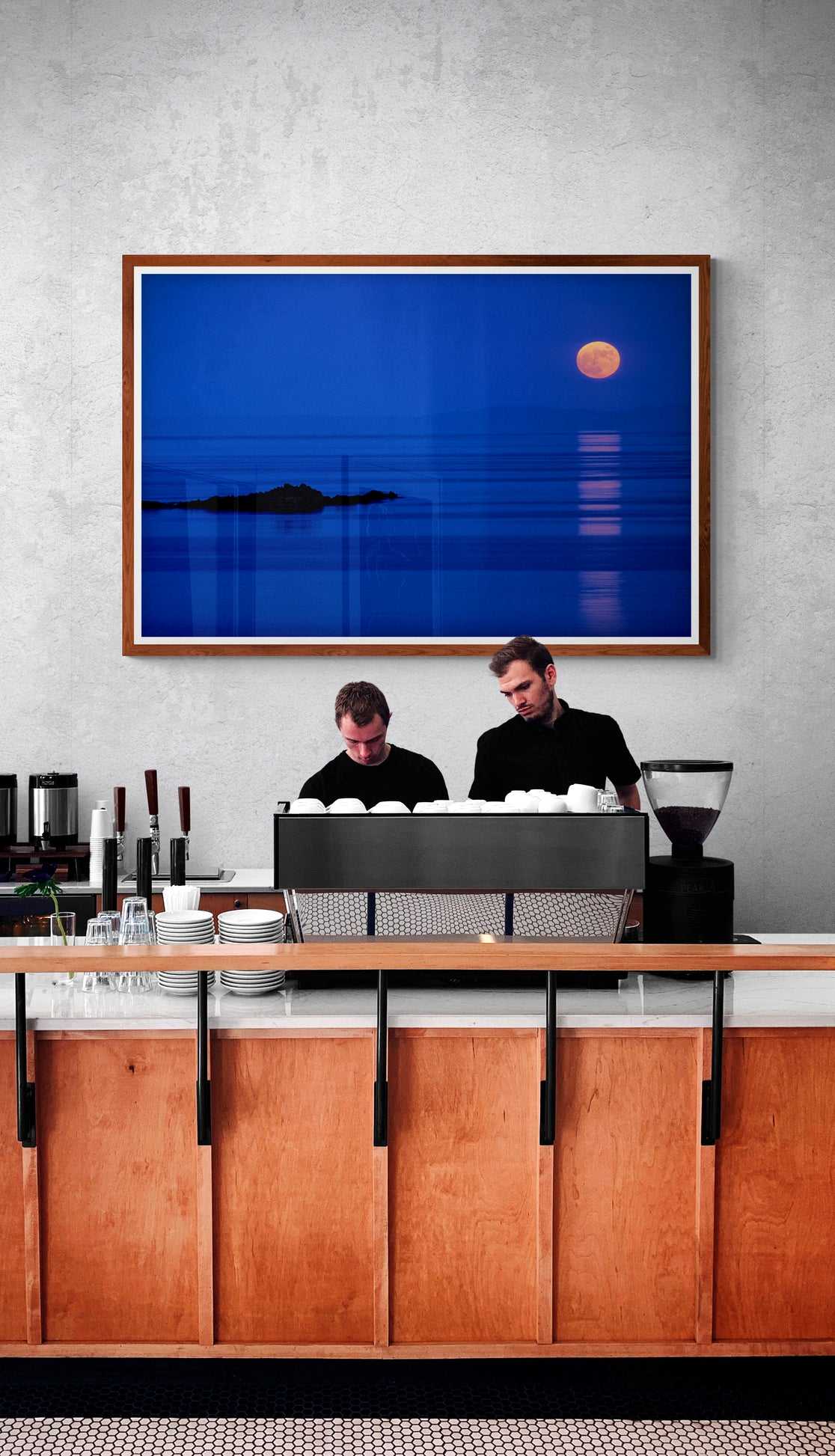Michael Hart Fine Art
Islay Moonrise over the Atlantic – Fine Art Twilight Photography by Michael Hart
Islay Moonrise over the Atlantic – Fine Art Twilight Photography by Michael Hart
A Self-Assignment to Islay’s Iconic Whisky Coast
I traveled to the Isle of Islay (pronounced eye-luh)—renowned for its single malt Scotch whisky—to photograph the legendary Lagavulin Distillery. My goal? To create a visual story more aligned with consumer branding than my typical industrial work back in Houston.
More Than Just Distilleries
While the whisky heritage drew me there, the landscape offered much more. I explored the island with camera in hand, finding personal scenes like “Rush Hour on Islay,” captured elsewhere in this gallery.
The Gloaming on Islay’s Western Shore
On a June evening, I stood near Lagavulin’s coastal edge, looking across the Atlantic toward the Kintyre Peninsula, made famous in Paul McCartney’s “Mull of Kintyre.” I anticipated a full moon rise and had my 300mm lens ready. In this far-northern light, twilight lingers—a phenomenon the Scots call the gloaming.
Letting the Blue In
I was shooting Fuji Provia film—known for its cool shift during twilight. I removed my warming filter to allow the natural blue cast to deepen, intensifying the dreamlike atmosphere. Some ask if I used a blue filter. I didn’t. The warm yellow glow of the moon remains untouched. This is the honest poetry of film, not digital manipulation.
Framing the Moment
As the moon rose, I moved slightly to position it above a strip of dark offshore rock. That subtle anchor completed the frame. Planning, patience, and a touch of luck all came together in this one shot.
Available in a Limited Edition of 25, with 2 Artist Proofs.
Couldn't load pickup availability
Share












